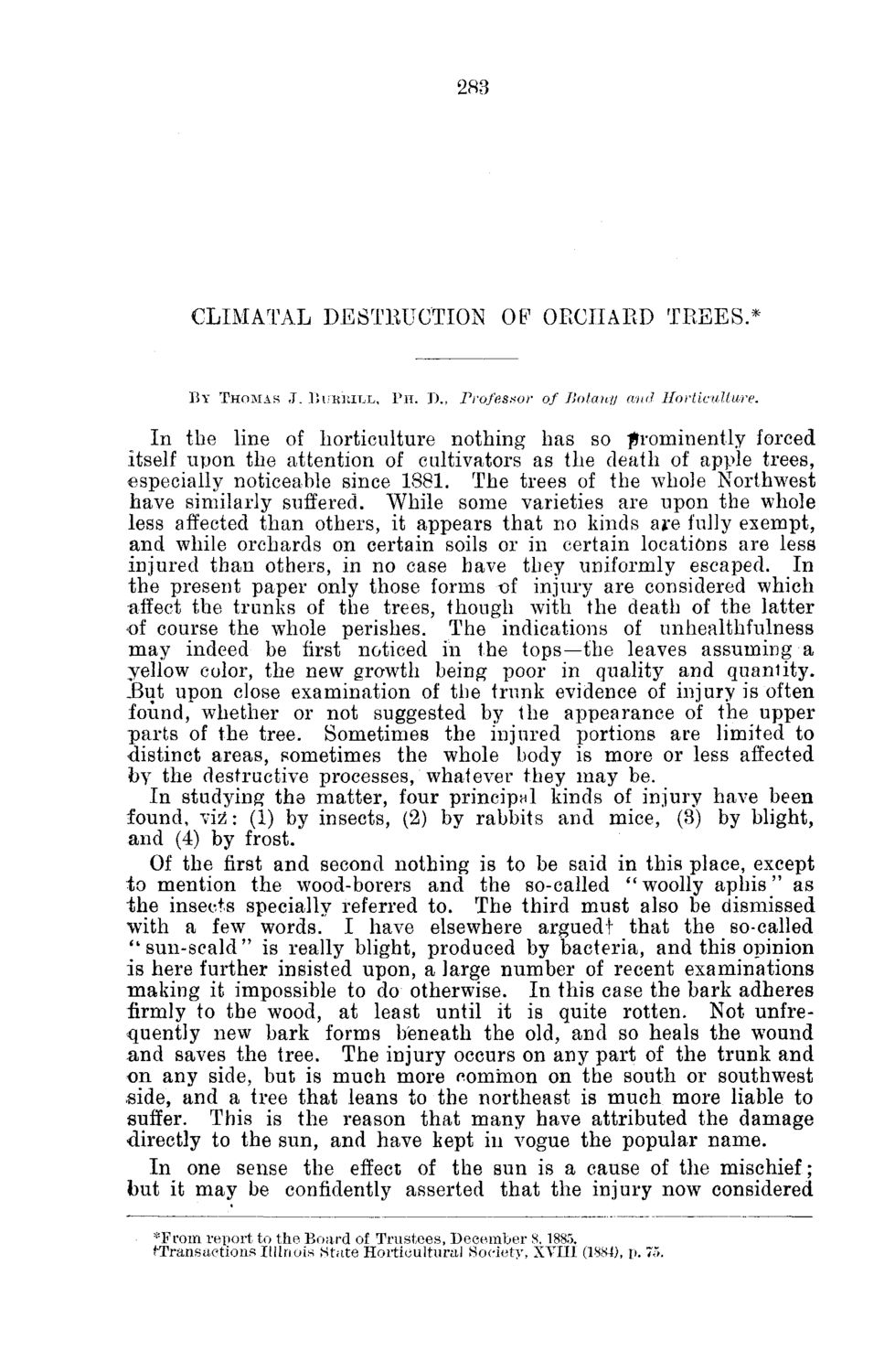| |
| |
Caption: Board of Trustees Minutes - 1886
This is a reduced-resolution page image for fast online browsing.

EXTRACTED TEXT FROM PAGE:
283 CLIMATAL DESTRUCTION OP ORCHARD TREES.* B Y THOMAS J . U I I K K I L L , P H . D., Professor of Botany and Horticulture. In the line of horticulture nothing has so prominently forced itself upon the attention of cultivators as the death of apple trees, especially noticeable since 1881. The trees of the whole Northwest have similarly suffered. While some varieties are upon the whole less affected than others, it appears that no kinds are fully exempt, and while orchards on certain soils or in certain locations are less injured than others, in no case have they uniformly escaped. In the present paper only those forms of injury are considered which affect the trunks of the trees, though with the death of the latter of course the whole perishes. The indications of unhealthfulness may indeed be first noticed in the tops—the leaves assuming a yellow color, the new growth being poor in quality and quantity. JBut upon close examination of the trunk evidence of injury is often found, whether or not suggested by the appearance of the upper parts of the tree. Sometimes the injured portions are limited to distinct areas, sometimes the whole body is more or less affected by the destructive processes, whatever they may be. In studying the matter, four principal kinds of injury have been found, viz: (1) by insects, (2) by rabbits and mice, (3) by blight, and (4) by frost. Of the first and second nothing is to be said in this place, except to mention the wood-borers and the so-called "woolly aphis" as the insects specially referred to. The third must also be dismissed with a few words. I have elsewhere argued! that the so-called "sun-scald" is really blight, produced by bacteria, and this opinion is here further insisted upon, a large number of recent examinations making it impossible to do otherwise. In this case the bark adheres firmly to the wood, at least until it is quite rotten. Not unfrequently new bark forms beneath the old, and so heals the wound and saves the tree. The injury occurs on any part of the trunk and on any side, but is much more common on the south or southwest side, and a tree that leans to the northeast is much more liable to suffer. This is the reason that many have attributed the damage directly to the sun, and have kept in vogue the popular name. In one sense the effect of the sun is a cause of the mischief; but it may be confidently asserted that the injury now considered *From report to t h e B o a r d of T r u s t e e s , D e c e m b e r 8,1885. (Transactions Illinois State Horticultural Society, XVIII (1884), p. 75.
| |